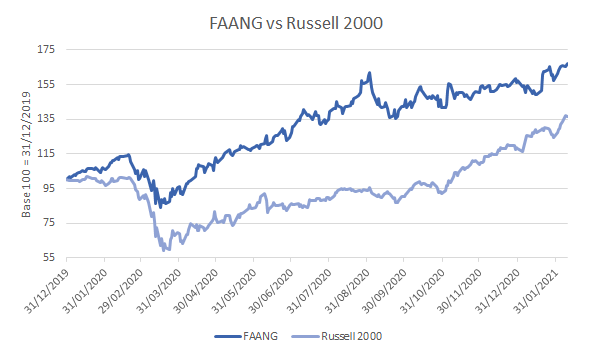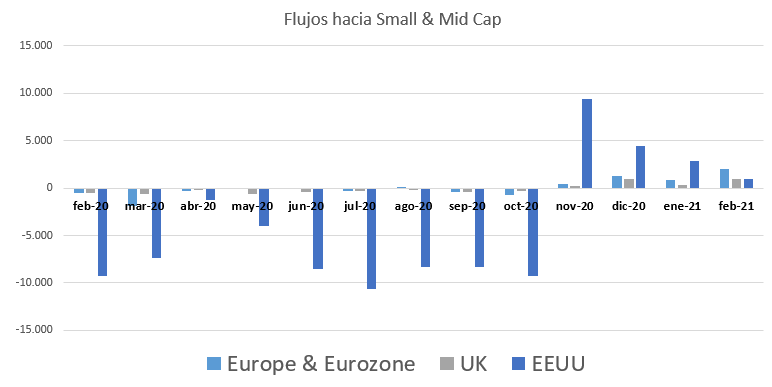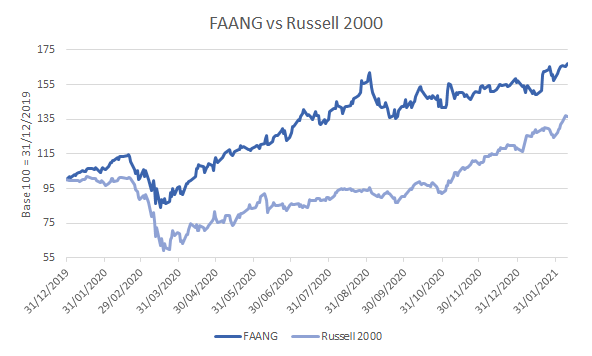Size does matter
Broadly speaking, largest capitalization companies (specially FAANGs), are the ones that have best withstood the severe blow of covid-19.
Their competitive advantages, partly due to their large size, have led these types of companies to gain market share in their respective markets. Their ability to survive in a digital world and the long dependence that many users have on them is a crucial factor of that.
This has caused divergences between the largest and smallest capitalization companies as a result of the crisis, as we see in the graph.

FAANG: Facebook, Apple, Alphabet, Amazon, Microsoft, Netflix. Fuente: Thomson Reuters. Elaboración Propia.
In any case, we have detected a trend in the last three months: smaller capitalization companies are gaining followers along the way, especially as a result of the good results of the clinical trials in November.

Fuente: Lipper. Elaboración Propia.
Since then, as we can see in the first graph, smaller-cap companies have performed better on the stock market.
In theory, we can expect smaller-cap companies to be more closely tied to the country's "real" economy, or what is popularly known as "Main Street."
2021 could be a key year for the performance of this type of companies. Against the common belief during March, 2020 has been the year of Wall Street, where we have seen large revaluations, especially in the US.
Therefore, this 2021 the pressure falls on "Main Street", which presents us with a recovery scenario in the form of good macroeconomic data and increases in GDP.
If this is the case, it is likely that we will see good revaluations in companies linked to consumption and the reactivation of the real economy, such as industrial and consumer discretionary companies.
In any case, in the graph we can also see how money inflows are slowing down as a result of the evolution of new waves of infections. We will see to what extent this type of companies can withstand constant inflows of money and keep up the good rally since November 2020.

